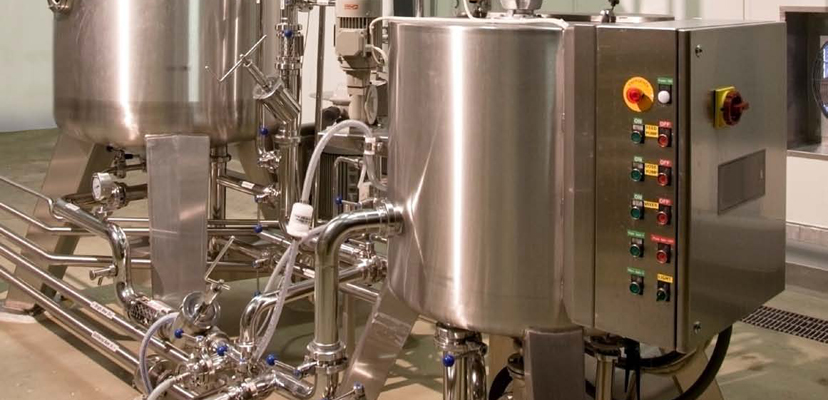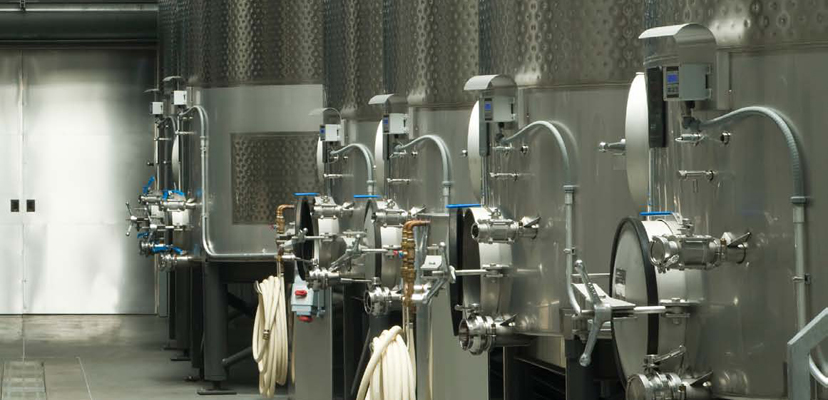


Modular concepts ensure great flexibility, reusability, and finally also lower costs in software development and the automobile industry. In the process industry, there is also a trend towards dividing systems into so-called “package units.” As a consequence, the individual units also require largely autonomous automation technology, which exchanges information with a central control system. Here manufacturers of automation technology are required to fulfill the high requirements of the process industry with their components and systems.
The life cycle of a system in the process industry is relatively long. A typical production system in the chemical industry is frequently designed so that it remains practically unchanged across a period of several decades. Despite regular maintenance work and the possible replacement of individual components, the basic structure of the system frequently remains unchanged across the life cycle. The systems demonstrate a high degree of automation. A small operating team is often sufficient to operate large systems safely. The typical structure of an automation system is the classic control system architecture. Sensors for chemical and physical process parameters as well as for the states of the system components transmit their values to the control station. There, central computers process the data and control the actuators such as pumps, stirrers, and heaters. The entire “intelligence” of the measurement, control, and regulation technology is in the central control system. The disadvantage of this architecture is the great amount of work required for the wiring. For large systems, several thousand sensors and actuators can be required, which must all be wired into a central point. The control system architecture is also relatively inflexible if changes to or expansions of the system are planned because the PMC (Process Measurement and Control) technology of the central system must always be adapted. Another disadvantage is the varying life cycles of automation-technical systems and process-technical systems. However the concept of the central control system also has advantages. Safety, which is especially important in the chemical industry, can be guaranteed ideally this way. System availability – also a central requirement in the process industry – is very high this way.
Modular approach
For a while now there have been efforts in the process industry to build modular systems. With the designation F3, a consortium was established in 2009 that consists of companies from the chemical industry and research institutes in various European countries. The goal of the F3 project, whose name stands for “Flexible, Fast and Future Factory,” is the development of concepts for modular production systems in the process industry. The idea behind the project is to build chemical production facilities according to the modular principle. It should be possible to combine individual module “package units” here according to the plug-and-play principle. Thus individual system parts can be replaced more easily, if, for example, the automation technology is out of date or the field units reach the end of their life span. The maintenance of the individual “package units” can also be uncoupled from the rest of the system. In the future, the system engineers will no longer build a complete system; instead, individual specialized suppliers will deliver different “package units,” for example mixers or fermenters, which are then combined into a complete system.
Automation and communication
A “package unit” includes not just the mechanical unit, but also the electrical installation, the sensors, and the automation and control technology. An important prerequisite for ensuring that such a concept works is the precise definition of the interfaces. In addition to the standardized mechanical and electrical interfaces, the interfaces of the automation technology are of great significance here. In the new concept, a central control station is still the point from which the personnel operate and monitor a system. However, a big part of the “intelligence” wanders to the “package units.” The job of the central automation technology become easier thanks to this concept since the “package units” take care of the lion’s share of the PMC tasks directly. Another big advantage of this decentralized automation architecture is the reduction of the effort required for wiring the sensors and actuators. Communication with the central control system is handled by bus systems, for example PROFIBUS DP or PROFINET.
Requirements of automation technology
Since the automation hardware is moving closer to the process, there arise new requirements for the individual components. Thus controllers must tolerate the harsher environmental conditions that can prevail near the process. These range from large temperature fluctuations to stresses due to humidity and dust on through to vibrations and shocks. Another requirement is the problem-free processing of the signals that arise and the possibilities of communicating via the various bus systems. Manufacturers of automation technology such as WAGO Kontakttechnik GmbH & Co. KG offer a wide-ranging portfolio of products for the process industry. With the WAGO-I/O-SYSTEM and the associated controllers, manufacturers of “package units” can incorporate nearly all sensors and actuators. The spectrum ranges from analog/digital inputs and outputs on through to the incorporation of nearly all common fieldbus systems. The WAGO-I/O-SYSTEM is approved for use in Zone 2 hazardous areas. Intrinsically safe digital and analog I/O modules also allow connection to peripherals in Zones 0 and 1. The automation functions can be implemented easily with the system’s ETHERNET controllers or IPCs.
Conclusion
The future in the process industry lies in the area of modular systems. So-called “package units” consist not just of mechanical and electrical components, they also contain the automation technology. This brings an essential change for the architecture of the automation systems, for a big part of the “intelligence” wanders to the “package units.” For the manufacturers of “package units,” system engineers, and operators, as well as for the suppliers of automation technology, this creates new opportunities.
Text: Jörg Lantzsch, professional journalist from Wiesbaden
Photo: WAGO